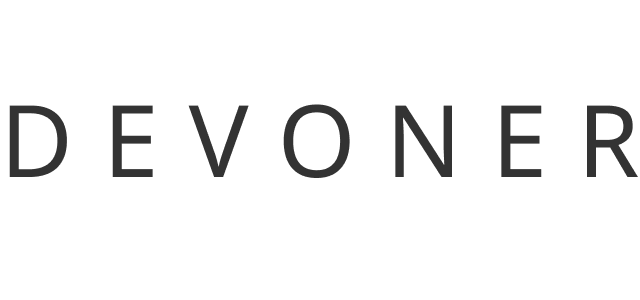As businesses increasingly rely on transportation management systems (TMS) to optimize their logistics and supply chain operations, the demand for custom solutions tailored to specific needs is on the rise. Crafting a custom TMS presents a unique set of challenges and opportunities, from the initial discovery phase to the intricate software development process.
A custom TMS is often an integral part of a broader supply chain management (SCM) system, making it a vital tool for businesses to streamline their operations. At Devoner, we specialize in creating sophisticated TMS solutions that address the specific needs of transportation and logistics companies, ensuring a competitive edge in an evolving industry.
This comprehensive guide will walk you through the essential steps and core features required to build a successful custom transportation management system. By the end, you’ll have a clear understanding of what a TMS is, how to begin developing an optimized solution, and which features are essential for success.
Let’s get started!
7 Essential Steps to Build a Custom Transportation Management System
The shipping industry is at the forefront of innovation, making the development of a custom TMS more crucial than ever. Below are seven essential steps to guide you through the process of creating an advanced solution tailored to the evolving needs of the shipping sector.
Step 1: Customer Discovery
The first step in developing a custom TMS is understanding your audience. Before diving into software development, it’s crucial to comprehend the unique needs and challenges of the shipping industry.
Here’s how to approach it:
- Thorough Research: Begin with in-depth market research. Understand your competitors, study industry trends, and identify what’s driving the transportation sector.
- Customization Focus: Recognize that not all shipping businesses are the same. Some need tools for lead generation, while others require robust customer relationship management capabilities.
- Data-Driven Insights: Utilize data analytics to pinpoint pain points and opportunities within the industry, providing concrete insights to guide your development.
By accurately identifying the needs of your audience, you’ll lay a strong foundation for a TMS tailored to meet those requirements, whether it’s focused on lead generation, nurturing, or a combination of both.
Step 2: Market Research and Analysis
Armed with insights into your target audience, delve deeper into market research and analysis to ensure your TMS aligns seamlessly with the dynamic landscape of the shipping industry.
Key considerations:
- Competitive Analysis: Examine your competition closely. Understand their offerings, strengths, and weaknesses, enabling you to position your TMS effectively in the market.
- Industry Trends: Stay informed on the latest trends in the transit sector, such as emerging technologies, regulatory changes, or shifting customer expectations.
- Market Alignment: Ensure your TMS not only meets current demands but also anticipates future needs, maintaining its relevance in a constantly evolving market.
This phase is crucial for ensuring your TMS is not just a one-time solution but an adaptable, forward-thinking platform ready for the challenges and opportunities of the shipping industry.
Step 3: Define Core Features
The success of your TMS hinges on its core features. Defining these elements ensures your system meets the unique requirements of the shipping industry.
Consider these features:
- Lead Management: For businesses focused on generating leads.
- Automation: To streamline processes and enhance efficiency.
- Robust Analytics: For data-driven decision-making.
- User-Friendly Interfaces: Ensuring ease of navigation for end-users and administrators.
- Customization Options: To cater to specific business needs.
By thoroughly defining these core features, you establish the foundation for a TMS that acts as a strategic asset, not just another software solution.
Step 4: Plan and Design Your TMS
With core features defined, the next step is to plan and design your TMS.
Key components:
- Collaborative Blueprint: Work closely with your development team to create a comprehensive blueprint, a visual representation of your system architecture.
- User Flows: Map out user pathways within the TMS to ensure a logical and intuitive experience.
- Functionality Specifications: Detail how each feature will operate and interact with other system components.
- User Interfaces: Design user-friendly interfaces that enhance usability for both end-users and administrators.
The planning and design phase is critical in ensuring that your TMS is not only functional but also user-friendly and well-structured, laying the groundwork for successful software development.
Step 5: Software Development
With a detailed blueprint in hand, the next phase is software development, where your TMS vision takes shape.
Focus areas:
- Coding: Develop the system according to the blueprint, with attention to detail and quality.
- Rigorous Testing: Ensure that the system functions as intended under various conditions.
- Continuous Refinement: Make iterative improvements based on testing outcomes to deliver a high-quality user experience.
A user-centric approach combined with a commitment to refinement ensures your TMS meets and exceeds expectations.
Step 6: Testing and Quality Assurance
Before launching, rigorous testing and quality assurance are vital to ensure your TMS operates seamlessly and meets high standards.
Essential aspects:
- Functional Testing: Verify that every feature functions correctly.
- Performance Testing: Assess the system’s performance under different user loads and network conditions.
- Security Testing: Identify and address vulnerabilities to protect sensitive data and maintain compliance with regulations.
These steps ensure your TMS is ready for a successful launch, providing a reliable and efficient solution.
Step 7: Launch and Continuous Improvement
The final step is launching your TMS and committing to continuous improvement.
Key considerations:
- User Feedback: Actively seek and incorporate user feedback to guide further enhancements.
- Iterative Improvements: Continuously refine the system based on user input and performance monitoring.
- Staying Current: Keep your TMS aligned with the latest industry trends, technologies, and regulations.
By launching confidently and maintaining a commitment to ongoing improvement, your custom TMS will remain a valuable asset in the ever-changing transportation landscape.
Essential Features of a Custom Transportation Management System
A TMS is the backbone of efficient logistics and transportation operations. Let’s explore the essential features for both administrators and users.
For Admin:
- User Management: Streamline user access and permissions.
- Customization: Tailor workflows and processes.
- Data Analytics: Gain valuable insights into transportation operations.
- Reporting Tools: Generate detailed reports for decision-making and compliance.
- Integration Capabilities: Connect the TMS with other systems to enhance operational efficiency.
For Users:
- Order and Freight Management: Easily create, track, and manage orders.
- Accurate Time Tracking: Use IoT for real-time visibility into order and delivery status.
- Route Optimization: Improve shipping efficiency by optimizing routes.
- Document Management: Manage essential documents like invoices and shipping labels.
- Communication Tools: Collaborate effectively with stakeholders through built-in channels.
Considerations When Building a Transportation Management System
Building a TMS requires careful planning and consideration of several factors to ensure effectiveness.
Considerations:
- Scalability: Ensure the system can grow with your business without performance issues.
- Adaptability: The system must be flexible to accommodate evolving industry requirements and new technologies.
- User-Friendliness: An intuitive interface is essential for reducing the learning curve and increasing productivity.
- Cost-Effectiveness: Consider the total cost of ownership, ensuring a strong return on investment.
Benefits of Utilizing a Transportation Management System
A TMS offers numerous advantages for logistics and transportation.
Key benefits:
- Cost Savings: Optimize routes and reduce fuel consumption.
- Improved Visibility: Gain real-time tracking of shipments.
- Enhanced Efficiency: Automate manual processes and reduce administrative workloads.
- Compliance and Documentation: Generate reports for compliance and audits.
- Data-Driven Decision-Making: Utilize analytics for continuous improvement.
By integrating a TMS into your operations, you can streamline transportation processes, reduce costs, and enhance customer service, gaining a competitive edge.
Key Takeaway
Building a successful TMS involves tailoring your solution to the specific needs of the transportation and logistics industry. Whether optimizing routes, enhancing real-time tracking, or streamlining communication, a well-crafted TMS addresses these needs effectively by centralizing and organizing transportation data.
Devoner is your trusted partner in crafting custom TMS solutions that align with the unique requirements of your business. Whether you’re a startup or an established logistics company, our expertise will help you succeed in this complex industry.


